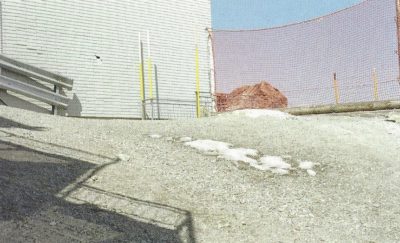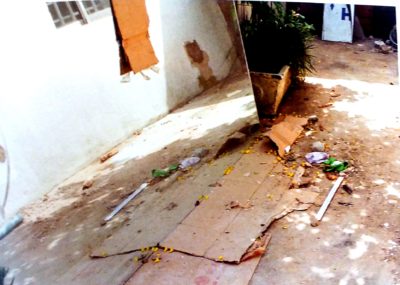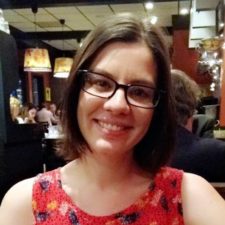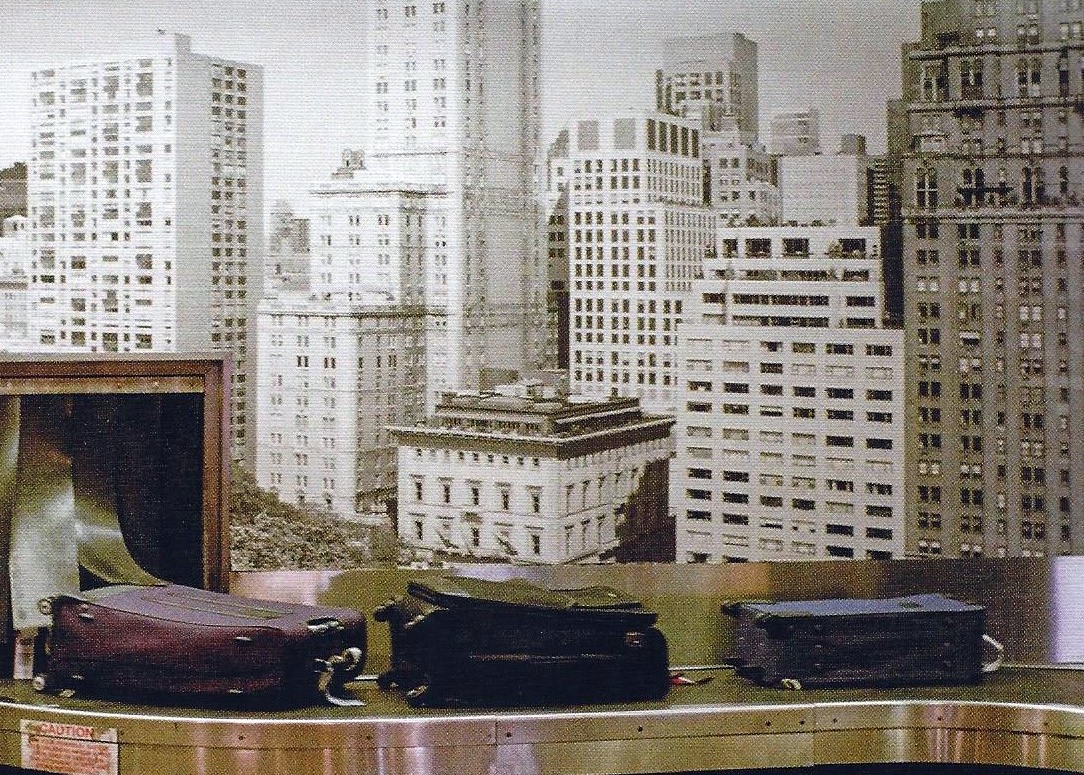It is early December and daylight hours are so short that I worry I am forgetting what colors truly look like. My eyes are ever tired. I am weary. It happens every year around this time and I feel worn-out until spring arrives.
This week I found an antidote in photography-prose hybrid Blind Spot by Teju Cole (Random House, 2017).
A gorgeous collection of color photography and evocative text, Blind Spot shook me awake from dormancy. Each photo is titled with the location it was taken, featuring datelines like Venice, London, Lagos and Beirut. The accompanying text sometimes introduces the picture or refers to previous shots. Other times, the text muses on a philosophical idea, classical painting, or bit of music where the reader is left to connect the words to the image. (I was pleased to learn that Cole is a fan of both Bjork and Beck, among others.)
Try this: Take a long look at this picture. What catches your eye? What do you make of the clay-colored mound behind the red fence?

At first, I assumed the mound was rubble from a construction site. Something ugly and inconvenient, maybe a new structure being built or a current one undergoing maintenance. Then I read the text of “Piz Corvatsch,” revealing that the seeming pile of rocks is actually the highest peak of the Bernina Alps.
I gasped! How could I have breezed through the picture and interpreted it as mundane? My own assumptions served as a blind spot in this case.
After another look I delighted in the angle of the shot. Cole reminds us that in this perspective, a mound of snow takes up as much space in the photo as the mountain.
Here is one of the “Lagos” shots, which held my attention for hours.

There is a mirror here, but where? The edges are well-hidden. The corresponding text recounts the author’s childhood memory of being challenged to write so neatly in school notebooks that nothing would be crossed out or interrupted. I turned the phrase “smoothed out” over and over in my head as I went back to the photo, looking for a seam.
This is not to suggest that Blind Spot is simply a collection of brain teasers to incite the imagination. Cole takes on blindness and vulnerability, thus invisibility, in bold or jarring ways throughout the book. For one example, one of the longest bits of writing details the undocumented immigrant experience for Black Ethiopian women living and working in Beirut. The text suggests issues of dress, disguise, visibility and vulnerability are worth exploring here.
On another page, a picture of a curtain over a doorway in Berlin is juxtaposed with text describing prisoners in Guantanamo Bay: the pants rolled at the cuff, the hoods to blind the prisoners but also to keep them from looking guards in the eye. These are not easy images to confront, though they are necessary and demand witness.
Still, my favorite pieces challenged like riddles, such as the text accompanying a photo of a man atop a tree in “Baalbek”:
The first time our ancestors climbed a tall tree, or came in a migrating band to the edge of a cliff, they experienced vertigo. Only hundreds of thousands of years later did we experience jet lag… Finally we had figured how to move across time faster than time moves across us. In epiphany, you’re neither here nor there. In jet lag, you’re in duple meter, both here and there at the same time.
While I face down dark December days, I find it a comfort to puzzle over experiences of space and time. (Maybe that’s just me.) A further endorsement of Blind Spot: I read this work slowly over the course of one week, and throughout that time I had much more vivid dreams.
If you dream of mirrors, labyrinths and photographs that leap off the page, read Teju Cole and seek out your own blind spots.

Laura Eppinger graduated from Marquette University in Milwaukee, Wisconsin, USA in 2008 with a degree in Journalism, and she’s been writing creatively ever since. She the blog editor here at Newfound Journal.
Cover photo: “Queens” by Teju Cole


1 comment on “Teju Cole challenges us to locate our own “Blind Spot””